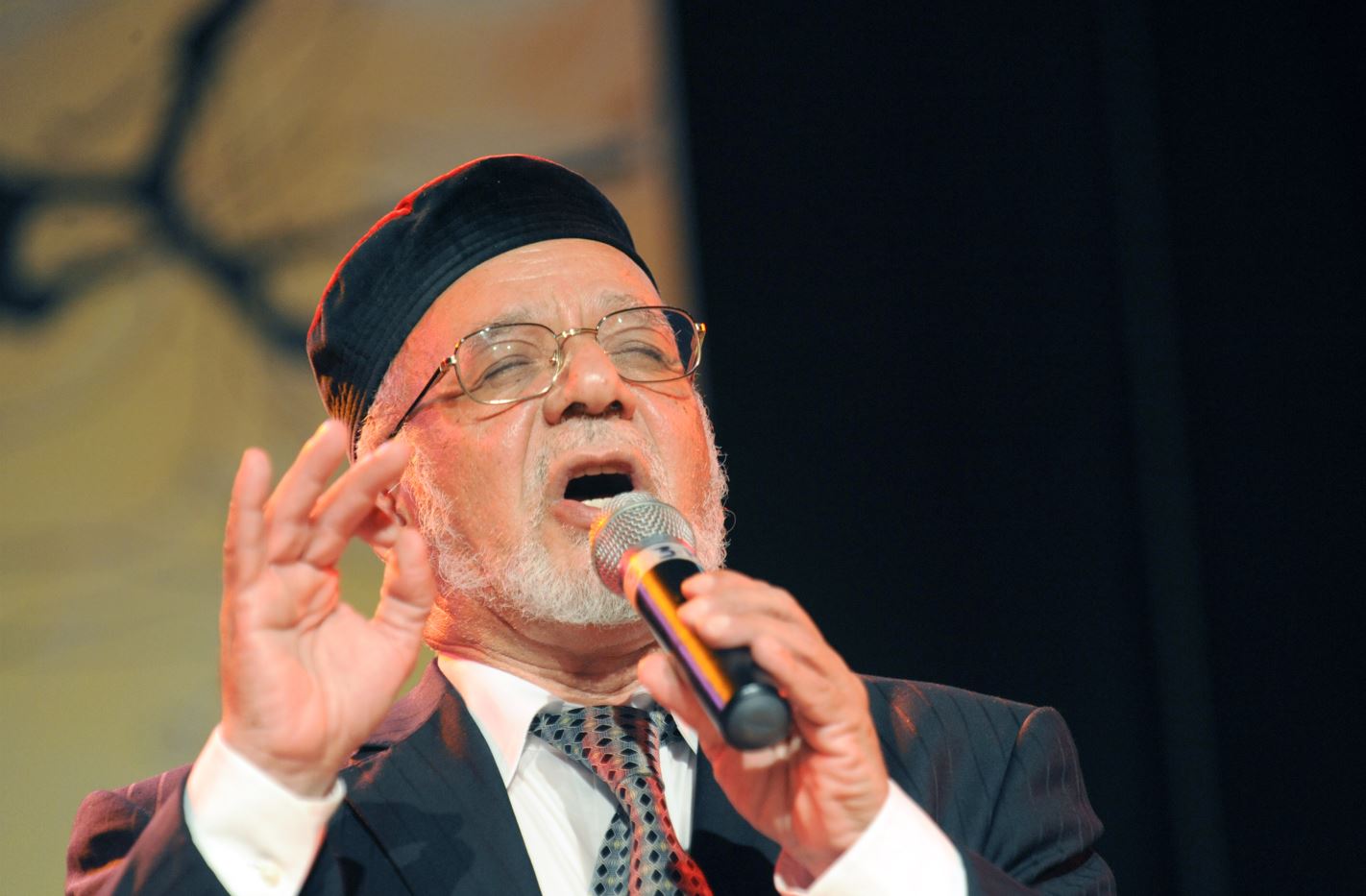
On October 29, 2009, Rabbi Haim Louk performs with the Moroccan orchestra Zyriab during the 6th festival of the Atlantic Andalusias in Essaouira, Morocco. Photo by Abdekhak Senna/AFP via Getty Images.
This Week’s Guest: Yair Harel
Just as Israeli society has become more at home with Judaism, so too has Israeli music. Across the Israeli music scene, songs and albums infused with religious themes, language, and sentiments have become far more popular in recent years. And a similar movement can be seen in Israeli culture; once dominated by an Ashkenazi elite, Israeli music now relates to its Arab neighbors as much as it does to the musical traditions of Europe and America.
Haim Louk, a Moroccan-born rabbi, prayer leader, and musical virtuoso, is one of the main reasons that Israeli music is now more at home with itself. On this week’s podcast, we’re joined by the Israeli vocalist and musical director Yair Harel, who takes us on a listening tour of Louk’s music and his artistic formation. Though religious in nature, Louk’s music can, as Harel shows, be easily grasped by non-religious audiences—so much so that one can’t truly understand much of Israeli popular music today without understanding Louk’s influence.
Musical selections in this podcast are drawn from the Quintet for Clarinet and Strings, op. 31a, composed by Paul Ben-Haim and performed by the ARC Ensemble.
Excerpt (36:28-37:59):
This essence of trance is something that is built into the piyyut (liturgical poetry) setting. You can have many many stanzas to a piyyut—in this case it might be ten or twenty—and basically the melody is repeating itself. This repetition is happening all the time, which is an important element in trance—you’re surrendering to it. It’s repeating, but it’s not actually repeating. It’s always moving slowly, slowly forward.
Also, in the performance there are always small variations to the melody. The words also contribute, because the words change sometimes. There are also phrases that repeat and phrases that change. In this case, the piyyut goes in alphabetical order—for every letter, there’s a phrase. That also takes you from step to step, and the rhythm grows slowly, without being pushed forward. If you’re in it, you’re not supposed to feel when it happens. But suddenly you find yourself going faster and faster, and if you surrender to it there’s the quality of listening, of being open, with someone who knows how to lead it. It’s rare in modern times, when everything goes fast and a song has to be three minutes long in order for someone to listen to it.
